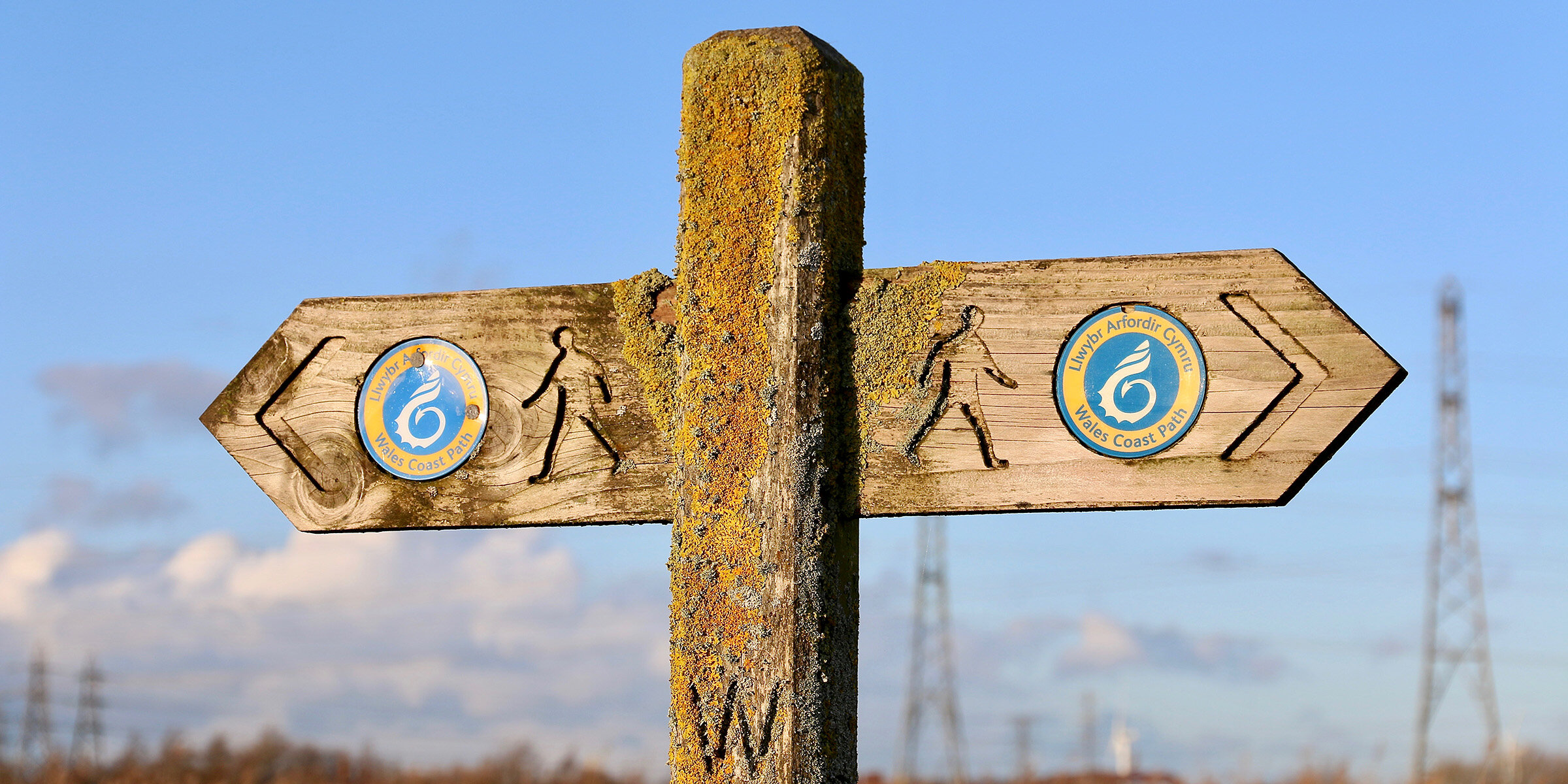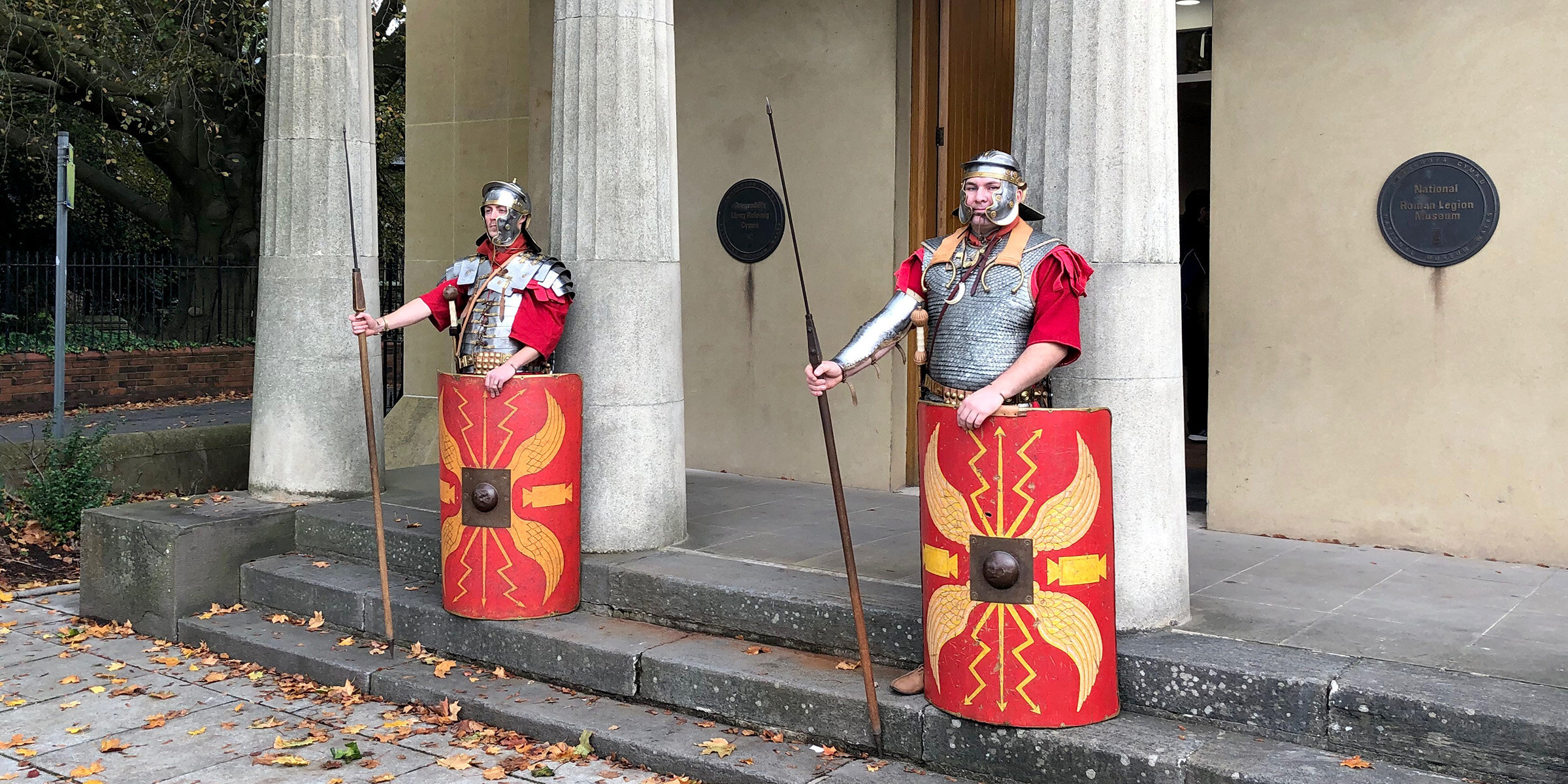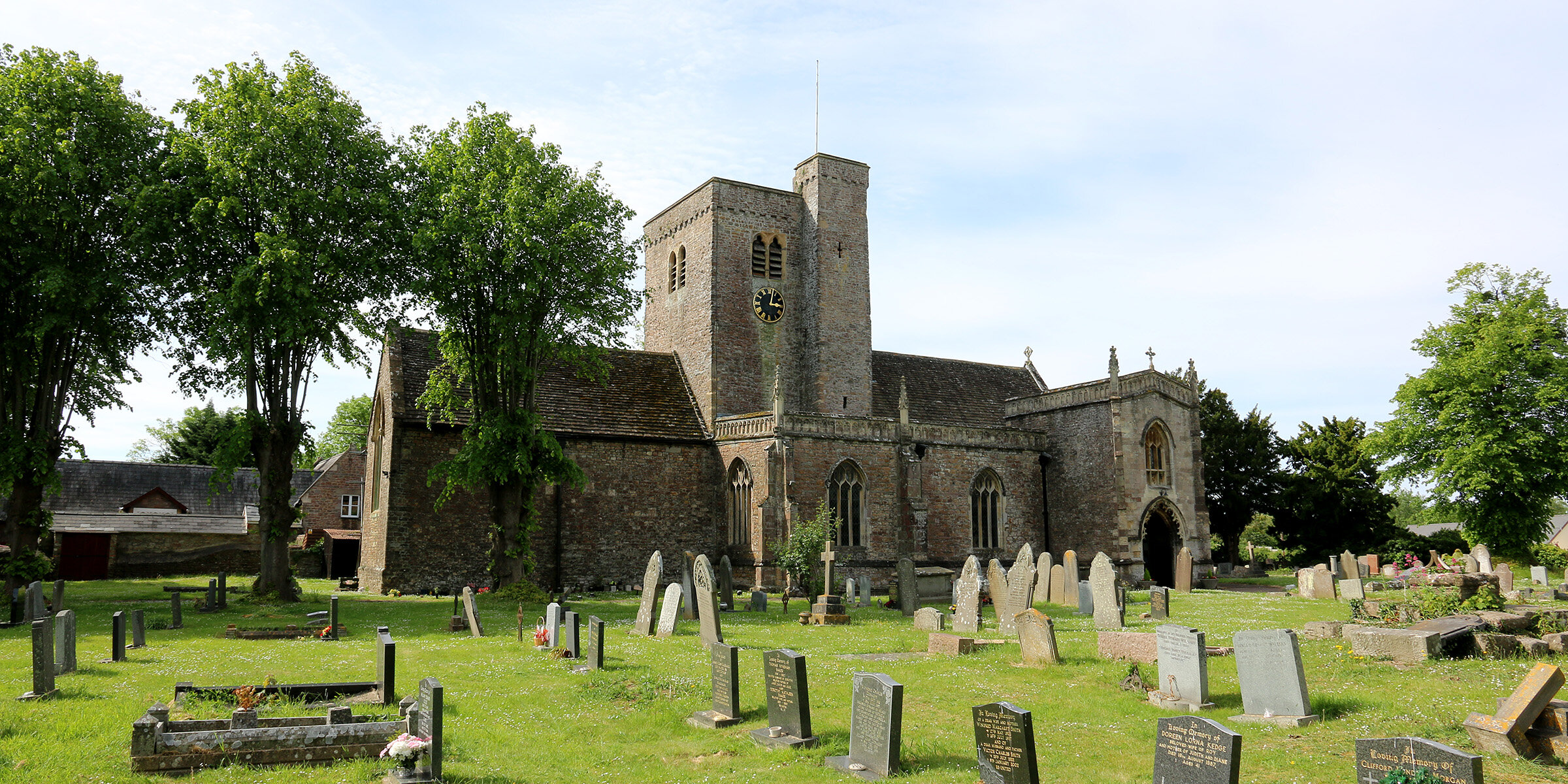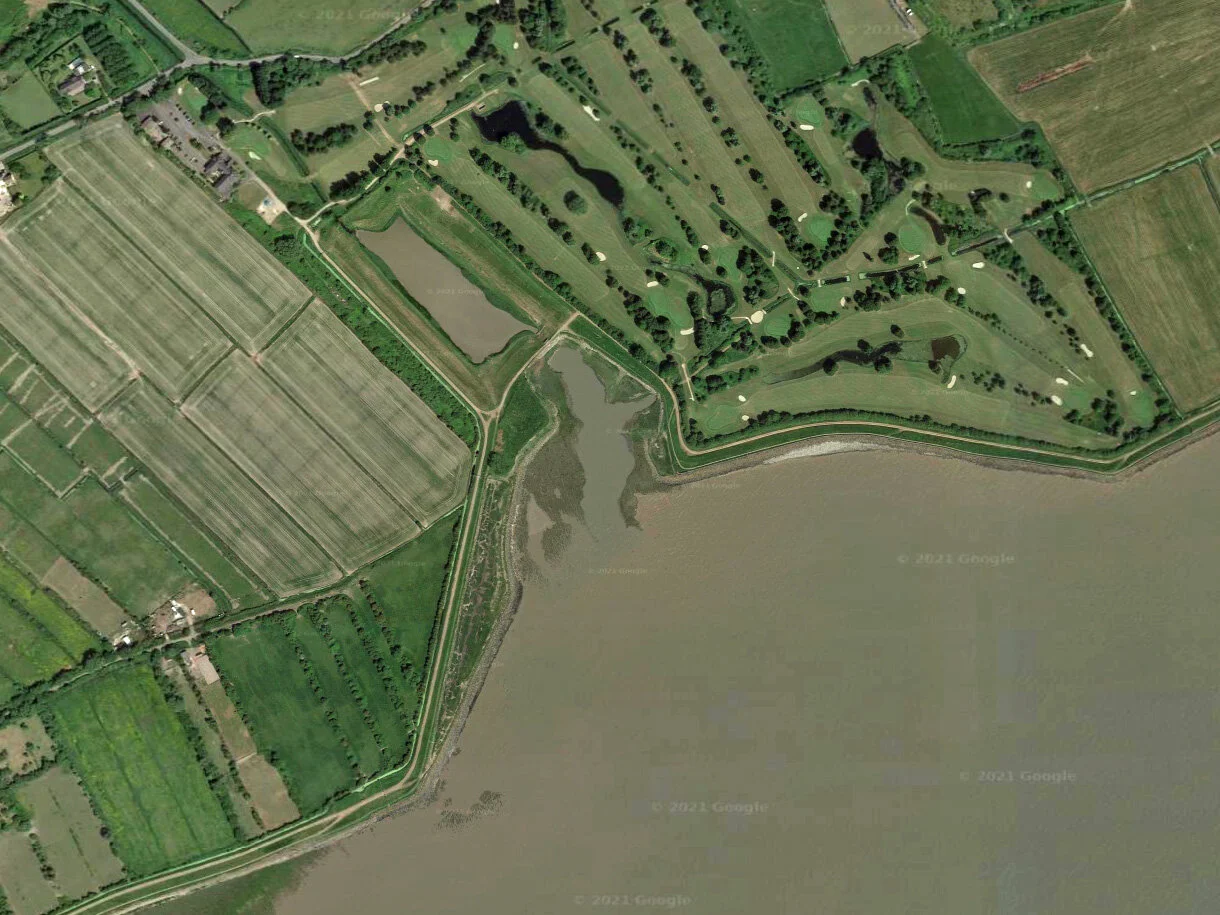St Mary’s, Magor.
Churches have been at the heart of life on the Levels for much of the last thousand years.
They have been focal points for the communities that developed around them, witnessing, and bearing the scars of life and death on the Levels - such as the catastrophic flood of 1607.
For many centuries they were by far the largest buildings on the Levels. Their spires and towers could be seen for miles across the low-lying fields. Many have their origins in the turbulent decades following the Norman conquest of south Wales in the 12th century, although some date back much further.
The influence of the Church, especially Goldcliff Priory and the monastic granges of Tintern Abbey, on the development of the landscape is an essential part of the Levels’ story.
St Thomas the Apostle, Redwick
Over its long history, the parish church of Redwick has been dedicated to several different saints; before 1875 it was St. Mary the Virgin and before that St. Michael the Archangel.
The building dates from the 13th and 15th centuries, although it may have 12th century origins. It was restored in 1875 when the architect John Norton rebuilt the west wall and inserted a large window.
As you enter the church, look for the mass dials inscribed into the buttress of the porch. Mass dials, also called scratch or tide dials, are simple sundials and are usually found on the south side of churches. There are also two flood markers, indicating the height reached by the Great Flood of 1606/07.
Inside St Thomas’ Church
Inside the church, look out for the 13th century font, the carving of a green man, and the remains of a medieval rood screen (an ornate wooden screen separating the altar from the nave) and rood loft (a balcony above the screen used for displaying a crucifix and the statues of saints).
There is also a full-immersion baptistery. As the church is built close to sea level, the baptistery naturally fills with water after heavy rain. There are six bells in the tower, including two that date from about 1350. All were removed for retuning in 1987 and rehung in a new steel frame in 1991.
St Thomas’ was one of only a few churches in Wales to suffer bomb damage during the Second Word War, when the roof was damaged and windows blown out.
St Mary Magdalene, Goldcliff
Church of St Mary Magdalene, Goldcliff
The tiny parish church of St Mary Magdalene dates from the early 15th century and consists of an undivided nave and chancel, a castellated tower to the west and a south porch. Drainage ditches enclose the roughly square churchyard and there is the stump of what is thought to be a medieval cross on a small mound. The entrance porch is approached along an avenue of pollarded lime trees.
Although the church dates from the 15th century, parts of the building appear to be older (the nave has been dated to the 12th century). It has been suggested that an existing building, possibly a barn, may have been converted to serve as parish church after the original church at Goldcliff Priory was badly damaged by a storm in 1424. It is possible that some of the stone used came from the ruined priory, as there are some odd pieces of decorative stonework above the windows on the south side of the building.
The plain, squat tower, which contains one bell, is probably an 18th or 19th century addition. The interior of the church is very simple. There is a medieval font with an 18th century cover. On the north wall of the nave is a brass plaque commemorating the Great Flood of 1606/07.
St Mary the Virgin, Nash
St Mary’s, Nash
Known locally as “the Cathedral of the Moors”, the history of St Mary’s church is closely linked to the nearby medieval Benedictine Priory at Goldcliff. The foundation charter for the priory refers to a church at Goldcliff and a chapel at Nash. The present church dates from this time, although it was extensively rebuilt in the 16th century and little now remains of the original Norman building. The church was once much larger, but the north aisle to the nave was demolished in 1792; the old roofline is still visible on the tower.
The church tower, with its tall octagonal spire, dates from the 1500s and contains 6 bells. It is a landmark for many miles around and was once the tallest structure on the Levels. Although still prominent, it is now dwarfed by giant wind turbines and the imposing bulk of Uskmouth Power Station. Beside a small door at the base of the tower is a plaque marking the height reached by the 1606/07 Great Flood.
Inside, the church has a complete set of 18th century furnishings, with box pews, a three-tiered pulpit and a western gallery. Look out for a ‘squint’, or peep hole, between the room at the base of the tower and the chancel, which allowed an attendant to view the service and communicate with the bell ringers.
St Cadwaladr’s, Bishton
The village church at Bishton is named for Cadwaladr ap Cadwallon, King of Gwynedd from 655-682 AD. Cadwaladr was a supporter of the early Christian Church and Bishton is one of three churches in Wales to bear his name.
The original wooden church was rebuilt in stone after the Norman Conquest, although the church today largely dates from the 14th and 15th centuries.
As you explore the church look out for the four carved stone heads in the chancel arch, known as the priest, the monk, the nun and the happy man.
St Bridgets, St Brides
St Bridget’s, St Brides
The village church of St. Bride’s, Wentlooge, is dedicated to St. Bridget, one of the patron saints of Ireland. The church dates from the 14th and 15th centuries and replaced an earlier, possibly Norman, chapel.
While much of the main body of the church is constructed of rough stone, the tall 15th century western tower is built of dressed stone. It contains 6 bells, four of which are dated 1734 and bear inscriptions The massive structure is so heavy that it has sunk into the ground and lists to one side.
An inscription inside the porch records the Great Flood of 1607. The lower part of the inscription is about five feet from the ground, marking the height to which the waters reached.
St Mary's, Marshfield
The Parish church of St Mary’s, Marshfield, dates from 1135, during the reign of King Stephen, and is thought to have been built by Countess Mabel in memory of her father, Robert Fitzhamon, Norman Lord of Glamorgan.
The church features a particulary fine battlemented tower and there is the octagonal base of a cross in the churchyard, both dating from the 15th century. The church was extensively repaired in the late 19th and early 20th centuries, but retains many medieval features.
St Mary’s, Portskewett
St Mary’s, Portskewett
The village church of St Mary’s dates back to the 12th century. It is built from gray and red limestone, with yellow sandstone used for decorative finishes. The squat battlemented tower and large porch were added in the 16th century. Unusually, the original entrance was on the north side of the building. This entrance, capped with a massive carved stone lintel, is now blocked.
Look for the steps in the churchyard that formed the base of a medieval churchyard cross and the carved cross above the blocked-up doorway, which may be the oldest part of the church.
Next to the church is a small interpretation centre telling the story of Portskewett.
St Mary’s, Magor
St Mary’s, Magor
A large church with a central tower and two storey porch. The oldest parts of the building, including the tower and chancel, date from the 13th century, although it may be on the site of an earlier 7th century church founded by Cadwaladr, King of Gwynedd.
Sections of the church were rebuilt in the 15th century and the ornate porch was added in around 1520. The room above the porch, called a parvise or priests room, was once used as the village school.
On the west side of the churchyard is the ruin of Magor Mansion, sometimes called the Procurator’s House. Built in the 16th century, the impressive two storey house was occupied by the Vicar of Magor.
Holy Trinity, Sudbrook
The ruined remains of Holy Trinity sit perilously close to the crumbling cliff edge at Sudbrook. Built in the 12th or 13th century, the church originally served the medieval village at Sudbrook.
It was recorded as being in use in 1560 but was abandoned by the end of the 18th century. One of the last recorded burials was Captain Blethin Smith of Portskewett in 1757.












